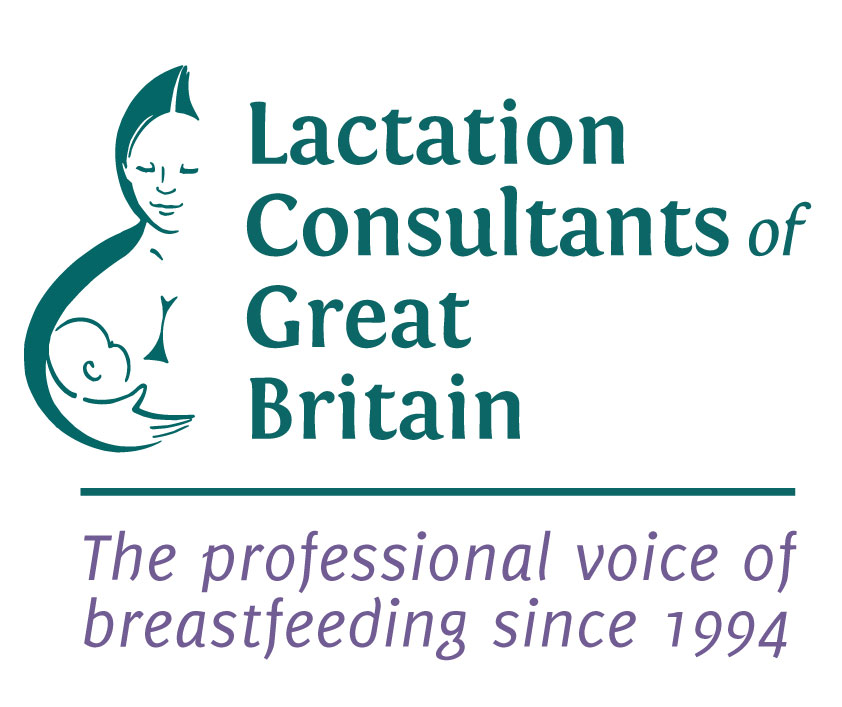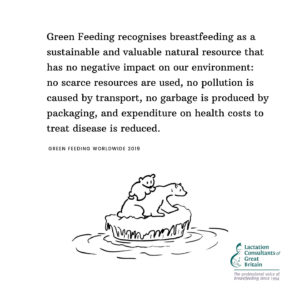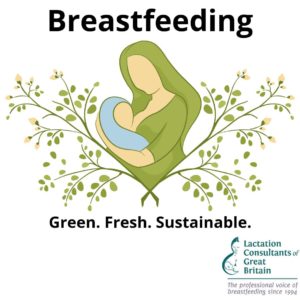
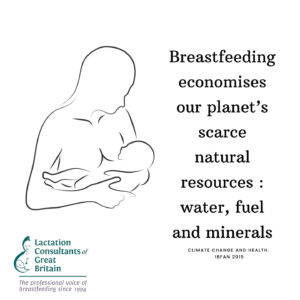 Lactation Consultants of Great Britain social media team focused a week on the climate strike in September 2019. Our posts reached over 35,000 people and had over 200 shares on Facebook. Instagram reached over 1600 people with the message of climate and breastfeeding being important and Twitter reached over 100 interactions.
Lactation Consultants of Great Britain social media team focused a week on the climate strike in September 2019. Our posts reached over 35,000 people and had over 200 shares on Facebook. Instagram reached over 1600 people with the message of climate and breastfeeding being important and Twitter reached over 100 interactions.
The LCGB social media team shared memes relating to recent research and information about climate change and the role breastfeeding takes in being green, fresh and sustainable.
To mark the end of the week of LCGB focusing on the environmental impact of infant feeding we shared a guest blog on our social media feeds. “How green is your baby’s milk?” from Gillian Weaver and Natalie Shenker at the Hearts Milk Bank
www.heartsmilkbank.org
How green is your baby’s milk?
As any mother will know, human milk can come in a range of colours. However, one colour shared by all breastmilk is an environmental green, and for milk banking some milk donations may be more green than others.
Whether fed directly at the breast, expressed and stored for later or donated and banke d in a human milk bank, the impact on the environment compared to infant formula is minimal. Breastfeeding without the need for pumps, electrically powered storage or plastic, and only a minimal increase in the dietary needs of mothers, is top of the list of sustainable foods. When you add in the improved health outcomes for both mothers and babies, with decreased lifelong health
d in a human milk bank, the impact on the environment compared to infant formula is minimal. Breastfeeding without the need for pumps, electrically powered storage or plastic, and only a minimal increase in the dietary needs of mothers, is top of the list of sustainable foods. When you add in the improved health outcomes for both mothers and babies, with decreased lifelong health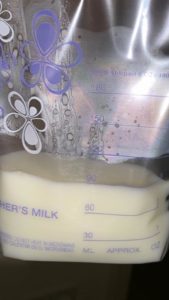 care burdens, that shade of green intensifies.
care burdens, that shade of green intensifies.
If feeding directly at the breast for whatever reason is not possible, environmental impacts can start to build. Plastics are usually used to enable expressed milk to be collected, stored and fed to infants, and we would call for these to be recyclable as well as made of food-safe materials. Then there is the manufacture and distribution of pumps and tubing sets (if hand expression is not possible), and the refrigerator and freezer storage involved. Given most homes in the UK already have this equipment, there is no additional cost to the environment beyond the pump-related equipment.
What about milk banking and its associated equipment, storage, processing and transport costs? At the Hearts Milk Bank, we are currently working to understand this in minute detail, so we can start offsetting our carbon footprint as early as next Spring. The banking of donated human milk is one of the most environmentally expensive ways to deliver human milk to babies. Disposable containers are the norm (although the type we send to donors are recyclable), pumps are almost universally used to collect the milk (although usually being used anyway by the donor rather than purchased to express for donation), milk is transported over many miles and we need a range of freezers and fridges for safe milk storage. However, donor milk saves lives, improves health prospects and provides the bridge that leads to higher breastfeeding rates. Its use is associated with fewer days in hospital (with cost savings all round) and reduces morbidities that again reduce hospital and non-hospital related health costs to individuals, society and the planet.
The charity The Human Milk Foundation is determined to reduce the costs of the Hearts Milk Bank, and we aim to be the first carbon neutral milk bank and a model for milk banks nationally and globally to adopt.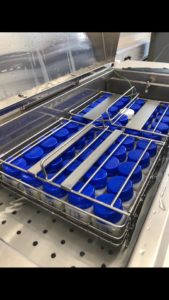 To do this, we are starting a programme of investigating all the costs both in environmental and financial terms, seeking out greener alternatives, and carbon offsetting. We have exciting plans and look forward to sharing these and our results with you soon as we do all we can to make donor milk greener, as well as all the other beautiful shades mother’s milk can be.
To do this, we are starting a programme of investigating all the costs both in environmental and financial terms, seeking out greener alternatives, and carbon offsetting. We have exciting plans and look forward to sharing these and our results with you soon as we do all we can to make donor milk greener, as well as all the other beautiful shades mother’s milk can be.
(PS Because of all the calcium bonded to the casein it will always be white on some level.)
